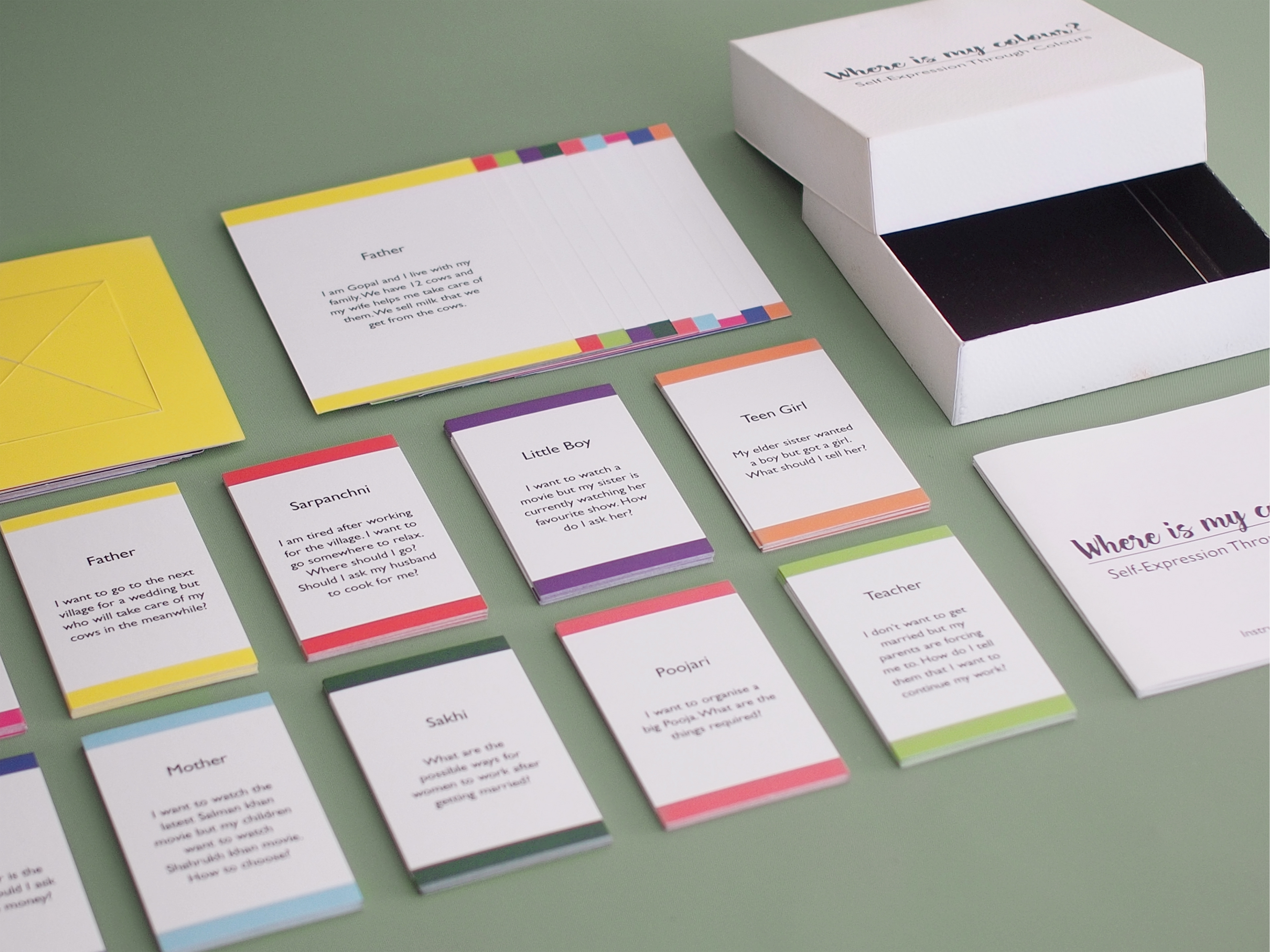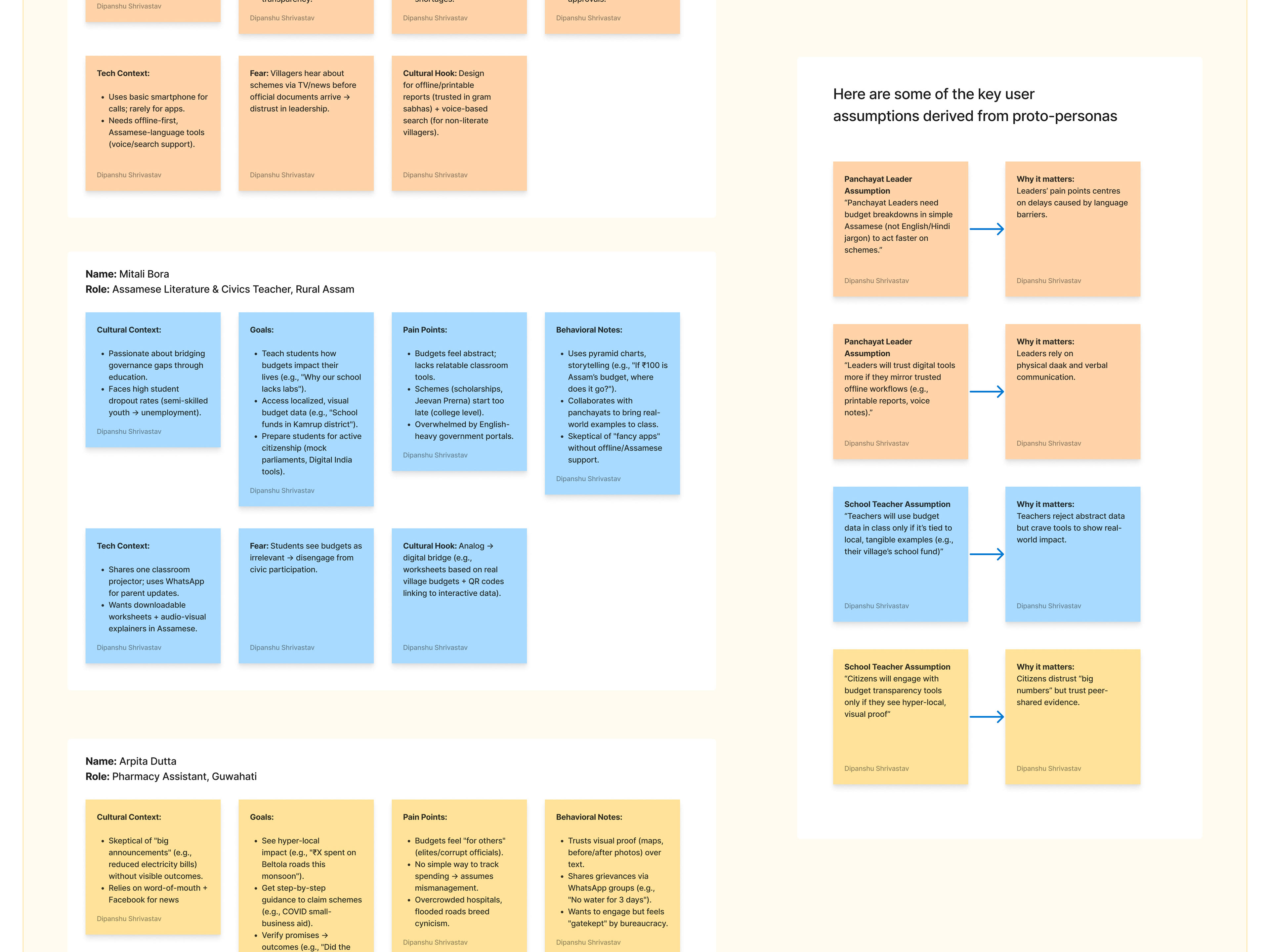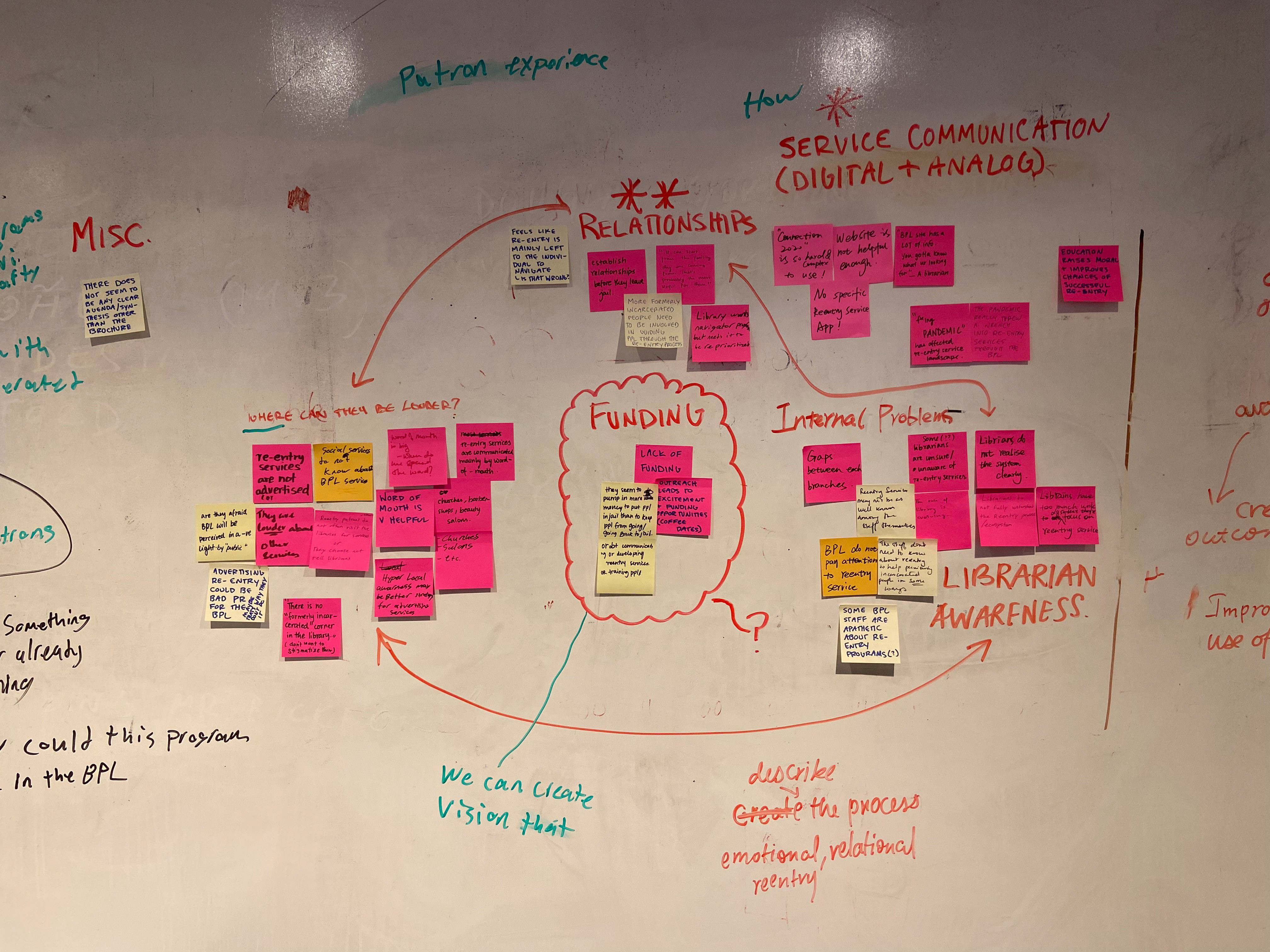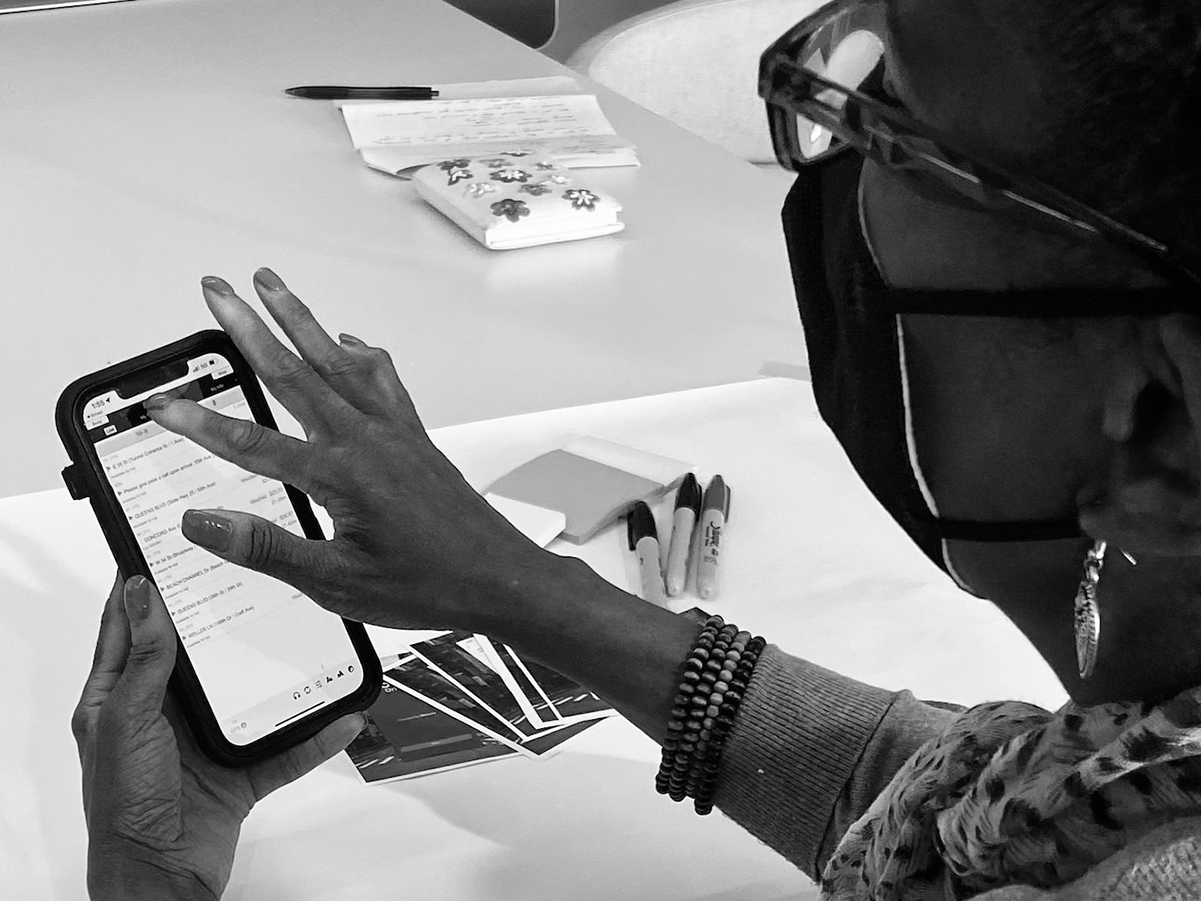Where is my Colour?— A Participatory Design Toolkit for Negotiation
Project Overview
"Where is My Colour?" is a participatory design project that emerged through a collaboration between Srishti Institute of Art, Design and Technology and IT for Change (ITfC), a Bangalore-based NGO committed to gender equity and digital rights. The initiative was anchored in Prakriye’s ongoing efforts to foster leadership and agency among adolescent girls ("Kishoris") from marginalized communities in rural Karnataka.
This toolkit was developed as part of a larger ethnographic and co-design project aimed at creating alternative, offline learning modules for the Kishori groups in the village of Mulluru, where ITfC has been running bi-monthly empowerment workshops. These sessions seek to subvert traditional, patriarchal norms through a curriculum focused on rights-based education.
MY ROLE: I led the design and prototyping of an activity-based learning kit tailored to the specific socio-cultural context of these villages. My responsibilities included conducting field research, developing ideation frameworks, prototyping educational tools, and facilitating feedback sessions with Kishoris to ensure the design was relevant and impactful.
Mulluru is a village 41 km from the city of Mysore. The Karnataka state government reffers to this region an extremely backward.
"The rationale behind this project is that in a context where the socialisation of girls has traditionally focused on enforcing their submission to male authority in all aspects of life, investments in 'critical education-for-empowerment' processes become vital to re-kindle their thwarted leadership potential."
Source: Strengthening adolescent girls' leadership capabilities: Outline of training curriculum, IT for Change, July 2016
PROBLEM: The Kishoris, though aware of their educational needs and aspirations, lacked the confidence to negotiate with authority figures, such as male teachers and village elders. This challenge was compounded by societal barriers, including gender-based discrimination and limited access to digital resources.
OPPORTUNITY: Through collaboration with ITfC, we identified an opportunity to create offline, interactive learning tools that would empower the Kishoris to develop negotiation skills and agency. The focus was on designing an activity that could be facilitated without digital devices, encouraging the girls to take ownership of their learning in the absence of ITfC facilitators.
Design Challenge
How might we equip adolescent girls from marginalized communities with tools to develop negotiation skills, self-confidence, and a sense of agency, especially in contexts where they are excluded from decision-making and often lack access to digital resources?
BUILDING AN EMPOWERMENT TOOL: FROM FIELD RESEARCH, IDEATION TO IMPLEMENTATION
We started with immersive field visits to understand the daily lives and socio-cultural environment of the Kishoris. This was followed by a series of ideation sessions, where we developed initial concepts for interactive activities. I led the prototyping of Where is my Colour?, testing it with the girls to gather feedback and refine the design.







Context & Immersion
We began by engaging with ITfC’s broader goals, curriculum design, and their grassroots operations in Mulluru. The field visits were crucial to understanding the everyday lives, constraints, and aspirations of the Kishoris. Language barriers were navigated through learning conversational Kannada, building rapport, and working closely with field facilitators and Sakhis (women volunteers).
Key insights from immersion:
Girls demonstrated high receptiveness to new ideas, despite infrastructural limitations like intermittent electricity and restricted mobility.
Gendered divisions were reinforced both at home and in educational environments.
There was an openness among Kishoris to speak about taboo topics such as menstruation when supported by a safe space.
We ran several design-led exercises like “A Day in the Life” and “What Do You Want to Be?” to map daily routines and aspirations. These, combined with narrative interviews with the Sakhis, formed the backbone of our qualitative insight.
Insight Synthesis & Framing
We organized our learnings around three lenses:
1. Patterns – Shared daily activities among Kishoris
2. Unique Stories – Differences that offered a lens into identity and agency
3. Opportunities – Moments where new interventions could support empowerment
Our synthesis made it evident that while girls were aware of what they lacked (e.g., computer labs), they lacked the confidence to advocate for change. This brought us to the framing: designing a low-tech, engaging toolkit that builds negotiation capacity through play.





Iterative Prototyping
We initially tested a simple colour-trading game titled "Baṅṇada haṅcike" ("Where is My Colour?"). Each participant received colour-mixing recipe cards and a paint cup, requiring them to trade to achieve their goal. While the girls enjoyed the interaction, the activity proved too abstract. Feedback revealed:
The metaphor of trading colours didn’t map easily to real-life negotiation.
The game was limited to small groups due to material constraints.
Sakhis often intervened too quickly, reducing the scope for peer-to-peer negotiation.





"Where is My Colour?" was amongst the seven shortlisted modules which were successfully implemented by the ITfC’s team.
Refinement: From Game to Roleplay Toolkit
Responding to these limitations, we redesigned the toolkit around relatable, role-based storytelling. This version allowed for:
Team-based play simulating real-world dilemmas
Character cards inspired by everyday figures in Kishoris' lives (e.g., teacher, mother, peer)
Problem scenarios tied to realistic conflicts: e.g., resisting early marriage, negotiating with teachers, etc.
Each team received a square board with triangular colour-coded tokens representing different characters. Teams aimed to collect all four tokens of their character's colour by:
Auctioning a token they didn't need with an associated problem scenario
Receiving solutions from other teams
Deciding whether a solution was convincing enough to make a trade
Reflecting on their decision with facilitator support
Implementation & Impact
The final toolkit included:
A modular activity kit with colour-coded triangle boards
Character and problem cards
Facilitator guidebook with encouragement strategies, ground rules for negotiation, and adaptation tips
The toolkit was implemented in the field by ITfC and received positively. It allowed Kishoris to engage with everyday dilemmas, collaborate, and articulate their own perspectives, promoting a sense of agency through structured play.
Long-term vision: The toolkit is designed to be expandable with new character/problem scenarios, allowing Sakhis to tailor sessions based on emerging needs.
Reflections
This project made me confront the subtleties of designing for social change. It challenged me to let go of solutionism and instead design frameworks that invite participation, foster self-reflection, and build interpersonal capabilities. I learned to work within infrastructural constraints while making space for systemic and imaginative interventions.
This experience deepened my understanding of participatory, feminist design practices, and how creative facilitation can become a mode of collective sense-making and transformation.
Credits
Project Mentorship: Catalina Alzate
Partner Organization: IT for Change, Prakriye Field Centre, IT for Change Coordinator Deepti Bharthur
Initial Research Collaborators: Anushree Chokappa, Manjusha Muthiah, Ushoshi Syam
Sakhis from Mulluru Village, Translator Harish Kumar
Partner Organization: IT for Change, Prakriye Field Centre, IT for Change Coordinator Deepti Bharthur
Initial Research Collaborators: Anushree Chokappa, Manjusha Muthiah, Ushoshi Syam
Sakhis from Mulluru Village, Translator Harish Kumar









